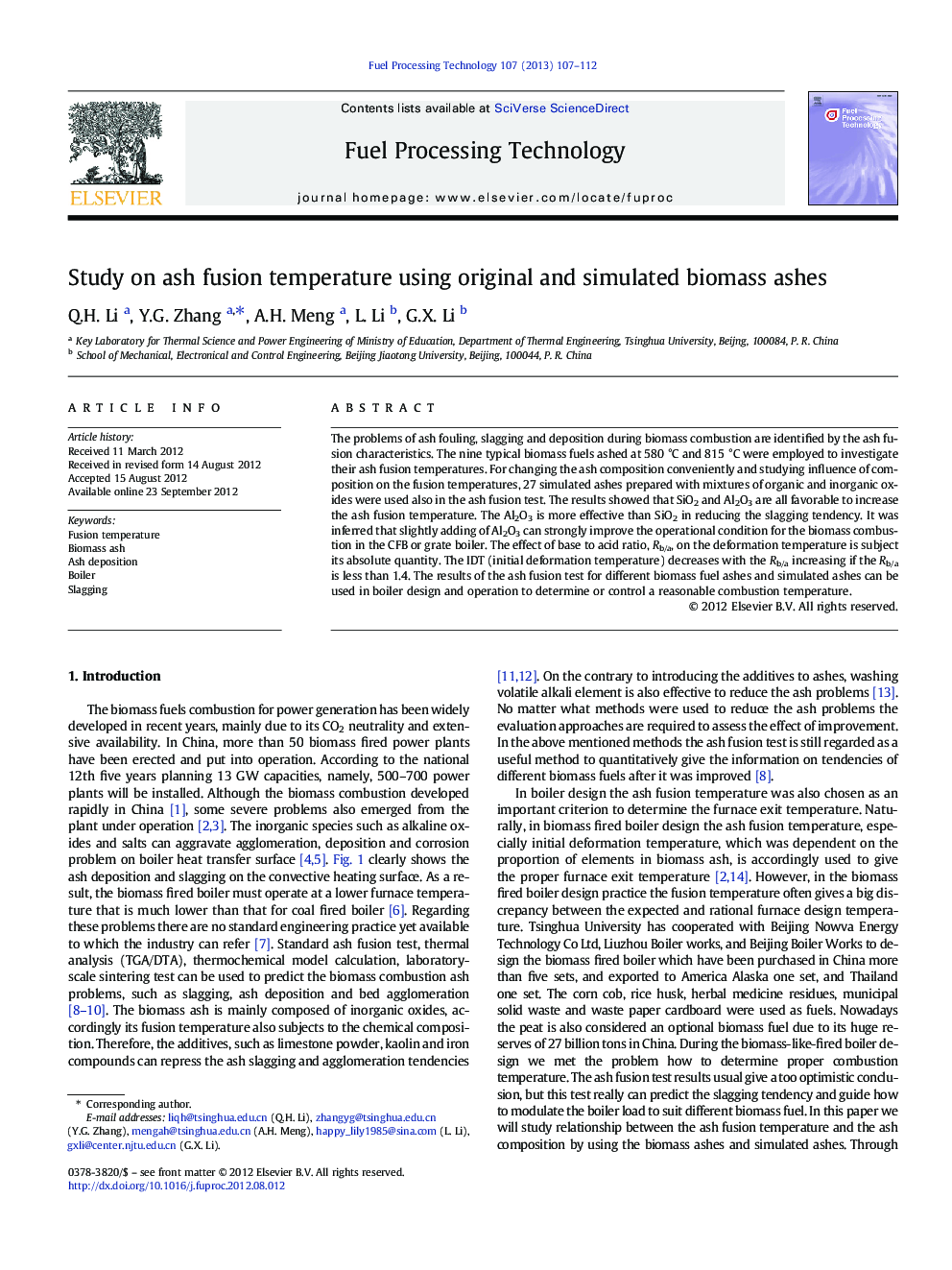| Article ID | Journal | Published Year | Pages | File Type |
|---|---|---|---|---|
| 210219 | Fuel Processing Technology | 2013 | 6 Pages |
The problems of ash fouling, slagging and deposition during biomass combustion are identified by the ash fusion characteristics. The nine typical biomass fuels ashed at 580 °C and 815 °C were employed to investigate their ash fusion temperatures. For changing the ash composition conveniently and studying influence of composition on the fusion temperatures, 27 simulated ashes prepared with mixtures of organic and inorganic oxides were used also in the ash fusion test. The results showed that SiO2 and Al2O3 are all favorable to increase the ash fusion temperature. The Al2O3 is more effective than SiO2 in reducing the slagging tendency. It was inferred that slightly adding of Al2O3 can strongly improve the operational condition for the biomass combustion in the CFB or grate boiler. The effect of base to acid ratio, Rb/a, on the deformation temperature is subject its absolute quantity. The IDT (initial deformation temperature) decreases with the Rb/a increasing if the Rb/a is less than 1.4. The results of the ash fusion test for different biomass fuel ashes and simulated ashes can be used in boiler design and operation to determine or control a reasonable combustion temperature.
► The nine biomasses were ashed at low temperature to study its ash fusion temperature. ► The ash fusion characteristics were investigated with the original biomass ashes and simulated ashes simultaneously. ► The effect of base to acid ratio on the deformation temperature is subject its absolute quantity. ► We suggest some general considerations for the biomass fired boiler design and operation.
